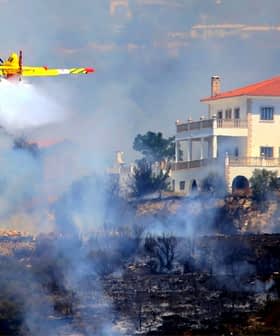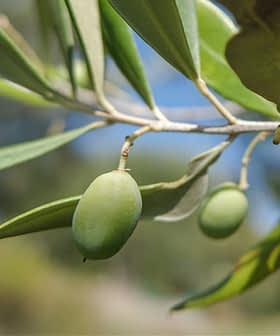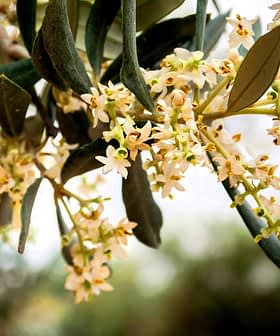Australian Producers Making Do Despite Bush Fires, Record Drought
In spite of a record drought and devastating bush fires, some large Australian producers are expecting close to an average production and high-quality oils in 2020.
 Australia's severe drought has caused rivers to dry out in New South Wales.
Australia's severe drought has caused rivers to dry out in New South Wales.Australian olive oil producers have faced unique challenges this year, as one of the worst droughts in its history and devastating bush fires have ravaged much of the country.
Despite the challenges, some big Australian olive oil producers are experiencing quality fruit growth and may come close to average production numbers in terms of quantity.
Higher water prices continue to have a negative financial impact on all farmers and growers who require irrigation water to grow their crop.
A large bush fire spread through much of southern and eastern Australia last year, with the worst of the damage coming in the last few months in New South Wales and Victoria, where many of the country’s olive groves are located. The fires, exacerbated by dry weather and high temperatures, ruined thousands of homes and businesses.
The olive growers that have been most impacted are those in New South Wales and those who operate small groves that do not have the benefit of irrigation.
See Also:The Best Australian Olive Oils“Our fruit volumes will definitely be down on last year,” Westerly Isbaih of Alto Olives, in New South Wales, said. “That is due to a combination of it being a lean year for us anyway, but also the drought. What fruit we do have is not suffering from any pest or disease issues so we see no potential quality issues.”
Isbaih said the lack of moisture toward the end of 2019 and hot gale-force winds had a damaging impact on flowering.
Alto was not directly affected by the fires, but smoke from the widespread blaze covered much of the region. Fortunately for growers, smoke is having little to impact of olive growth.
Isbaih said Alto will invest further in its drip irrigation system to counteract the ongoing drought.
Irrigation, said Boundary Bend business development manager Andrew Burgess, is critical to the continued success of Australian growers.
“As the Boundary Bend groves are fully irrigated, we have achieved some very good growth with very little disease pressure,” Burgess said of Boundary Bend’s operations in Victoria, which is south of New South Wales.
But irrigation comes at a price, Burgess said, as water resources are strained throughout the region in the ongoing drought.
“The consequence of the drought is higher water prices which has and continues to have a negative financial impact on all farmers and growers who require irrigation water to grow their crop,” he said.
Burgess added that Boundary Bend is expecting “a reasonably sized crop this year” thanks to its extensive irrigation system.
On the Mornington Peninsula in southern Victoria, Taralinga Estate has a large dam filled with bore water and rainfall that has allowed the company to continue producing quality olive oil, said Taralinga’s Karen Godfrey.
“Our 2019 harvest was a little down on 2018 in terms of quantity, but has already proven itself in terms of quality with two gold medals at the Australian Food Awards and best in show at the Golden Olive Awards,” she said.
Godfrey noted that “many olive growers face ongoing uncertainty with regard to irrigation water” in the region.
Burgess added that the Australian Olive Association is currently reaching out to small growers near the epicenter of the bush fire to see what the damage has been.
Despite the challenges posed by the drought, Isbaih said: “in many parts of Australia olives absolutely thrive which makes them a perfect crop.”
Though low temperatures in late winter and early spring sometimes present obstacles for growers, southern Australia is generally more temperate and suitable for olive growth than the tropical climate in the country’s north.
And the Australian olive oil industry is growing, as a result, said Godfrey.
“The Australian olive industry has grown substantially over the last 15 years. Australia is the largest consumer of olive oil per capita outside the Mediterranean so, in our opinion, the future of the industry here is looking very good indeed,” she said, adding that Taralinga is expecting its biggest year in terms of sales in 2020.
Boundary Bend has also expanded its operations to California — though 65 percent of its olives are still grown in Australia under the Cobram Estate and Red Island labels.
The relatively high cost of labor in Australia and the fact that the industry is not subsidized by the federal government can contribute to higher price tags on Australian olive oil, Isbaih said. He added that the quality of olive oil made in the country is helping to entice consumers worldwide to pick up bottles from Down Under.








